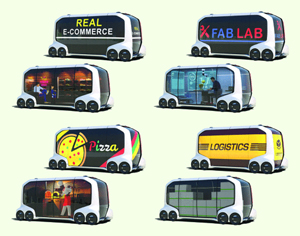|
Recently, there has been great interest in connected vehicles and autonomous driving. Through the years, I have written about different alliances, coalitions, and partnerships between vehicle manufacturers and map suppliers, telecom operators, concept developers, mobility as a service (MaaS) providers, software companies, hardware companies, and, of course, other vehicle manufacturers.
In contrast, I have seldom written about the outcomes of these partnerships. In retrospect, it seems the announcement of a partnership simply marks the beginning of an era, i.e., before the different players begin interacting, and, in some cases, the main outcome of a partnership is a good press release.
 Still, it shows that there is an interest to get a press release in a particular area, and that the area is important, but also that no real progress has yet been made. Furthermore, there have been many press releases about test tracks, field trials, and concept demonstrations. Still, it shows that there is an interest to get a press release in a particular area, and that the area is important, but also that no real progress has yet been made. Furthermore, there have been many press releases about test tracks, field trials, and concept demonstrations.
However, now when legislation is emerging and standards are almost in place, things are changing. Press releases are instead about mergers and acquisitions, signaling that a partnership has been taken to the next level.
When such partnerships are impractical, joint business models are being developed, and open-source interfaces are enabling companies to provide side-by-side services to customers. The ecosystem for connected vehicles has changed, and connected semiautonomous vehicles will be coming to a road near you much sooner than you think.
A New Mobility Ecosystem for a Toyota Concept Vehicle
Toyota recently introduced a concept vehicle called e-Palette. As a fully autonomous battery electric vehicle with an open-control interface, it allows partner companies to install their own customized automated driving systems. The concept is designed to be scalable and adaptable for a range of MaaS businesses.
Together, the new e-Palette alliance partners will create an ecosystem of hardware and software support designed to help companies utilize advanced mobility technology that fits their customers’ needs. Launch partners include Amazon, DiDi, Mazda, Pizza Hut, and Uber; they will collaborate on vehicle planning, application concepts, and vehicle verification activities.
The idea is to develop a suite of connected mobility solutions in a flexible, purpose-built vehicle. With its open interior layout, each vehicle can be customized with a purposeful interior that meets its user’s needs, e.g., parcel delivery, ride sharing, mobile hotel rooms, or on-the-go e-commerce.
Toyota envisions that the e-Palette concept, which will be made available in three sizes, will support various business needs and will transition seamlessly from one application to the next.
Full article: IEEE Vehicular Technology Magazine, Volume 13, Number 2, June 2018 |